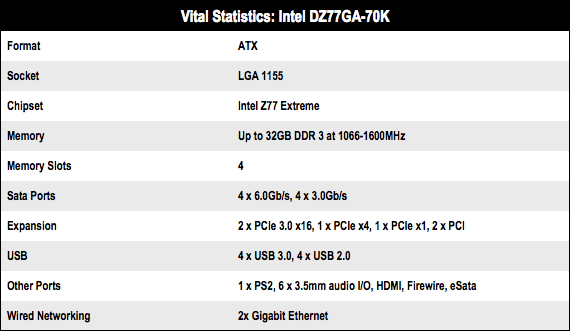This article is more than 1 year old
Intel Ivy Bridge Core i7-3770K quad-core CPU
The generation game
What's the frequency, Kenneth?
And, just like the Sandy Bridge K chips, the 3770K is a doddle to overclock. Just by adjusting the Ratio Limits to 47 and using the stock 100MHz base clock, I got my sample to reach 4.7GHz and run stably at that speed on air cooling.
To compare the old and new, I lined up the i7-3770K against the Sandy Bridge Core i7-2600K, which I happened to have to hand and which is only 100MHz slower than the i7-2700K, the new chip's closest match in the Sandy Bridge series.
PC Mark 7

Longer bars are better
X264 v4

Figures in frames per second
Longer bars are better
Cinebench R11.5

Longer bars are better
Apart from the move to a 22nm process, the other important IVY Bridge improvement is the new integrated GPU. There are two versions: the HD 4000, which is for high-end CPUs like the 3770K, and the less powerful 2500, which is aimed at the middle of the market. Its most important feature is - drum roll please - Direct X 11 support, a feature that was noticeable by its absence in the Sandy Bridge graphics core, the HD 3000.
3DMark Vantage

Longer bars are better
DirectX 10

Average frames per second
Just Cause 2 Dark Map benchmark at Ultra settings, 4x FSAA
Longer bars are better
With the die shrink comes better power consumption, the TDP (Thermal Design Power) of the i7-3770K falling to 77W, some 18W less than the i7-2700K. This is quite something when you realise that both four-core parts share the same 3.5GHz clock speed.


